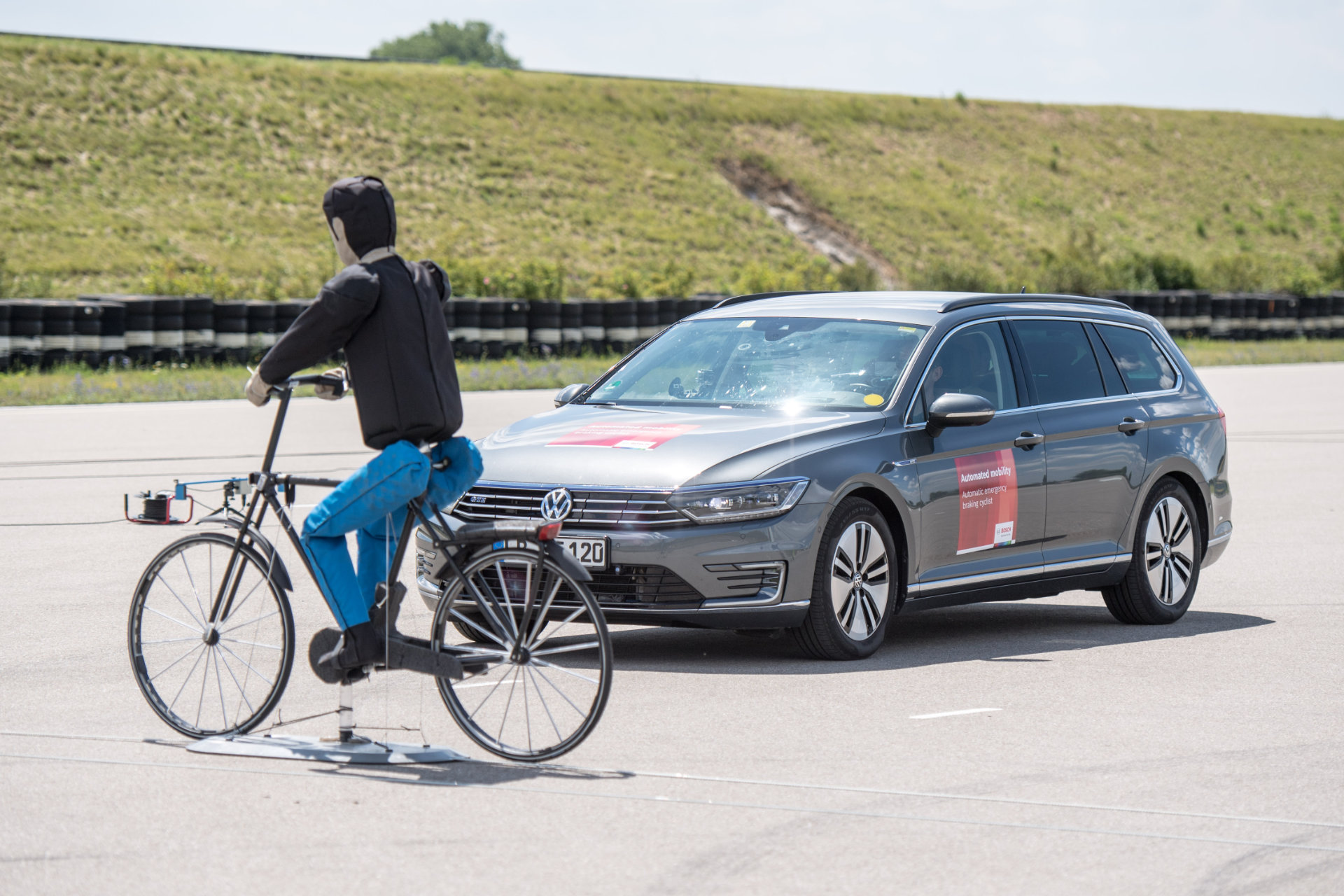New accident research from Bosch shows when autonomous emergency braking (AEB) is present in all vehicles, it could help mitigate or avoid up to 649,000 vehicle crashes with injuries or fatalities each year – a 35 per cent reduction.
Bosch said its research was conducted using data from the Crash Report Sampling System provided by the US Department of Transportation, which was analysed to address relevant collision scenarios that could potentially be addressed by AEB technology. The process provided a model to estimate the potential impact of AEB technology assuming 100 per cent vehicle penetration of the technology.
The research showed that of the more than 1.8 million vehicle crashes with injuries or fatalities in 2018 in the US, nearly 594,000 could have been mitigated or avoided with AEB, 36,000 with AEB for pedestrians, and 19,000 with AEB for cyclists. The total of all three means AEB technologies could mitigate or avoid altogether up to 649,000 vehicle crashes with injuries or fatalities per year in the US.
“AEB technology for vehicles is available today to support safer travelling for all road users. It only takes over in specific instances to help avoid or mitigate an incident,” said Dr Kay Stepper, Senior Vice President Automated Driving, Driver Assistance for Bosch in North America.
“We are continuing to advance vehicle safety in a way that protects vulnerable road users of many types – from drivers and passengers to pedestrians and cyclists. AEB is not a static technology, it’s one where we’ve leveraged Bosch’s ‘Invented for Life’ ethos to continue to push the boundaries of what’s possible to keep people safe.”
Bosch said its camera technology continues to advance object recognition to support applications of AEB using a combination of a “unique” multi-path approach and artificial intelligence – the camera can recognise and classify pedestrians even when they are 50 per cent concealed. In congested urban traffic, the camera can also recognise and classify partially obscured or crossing vehicles, pedestrians and cyclists. Recognition and classification allow the vehicle to trigger a warning or emergency braking.
According to Bosch, its latest generation of radar sensors capture the vehicle’s surroundings and demonstrate improved performance in bad weather or poor light conditions due to their detection range, wide aperture, and high angular resolution.
The company says encouraging higher AEB adoption rates starts with consumer education, but requires joint efforts between academia, government and industry. The National Highway Traffic Safety Administration’s (NHTSA) New Car Assessment Program (NCAP) provides comparative new vehicle safety information to assist consumers with purchasing decisions and encourages manufacturers to improve vehicle safety in the US, and with the formal addition of AEB to the programme, coupled with the creation of a new crash avoidance rating, Bosch says consumer awareness and adoption of the technology could be improved.
The NHTSA estimates that electronic stability control systems, which the company unveiled in 1995 and which have been mandated since model year 2012 for all new cars in the US weighing 10,000 pounds (4536 kilograms) or less, saved approximately 9000 lives in the US between 2015 and 2018.
Despite the technological advances, Bosch says new data from the NHTSA shows an increase in US motor vehicle traffic crash fatalities of 10.5 per cent for the first quarter of 2021 compared to Q1 2020. This is despite a 2.1 per cent decrease in vehicle miles travelled over that time as reported by the Federal Highway Administration. For all of 2020, traffic fatalities in the US were up 7.2 per cent over 2019, despite a 13 per cent decrease in vehicle miles travelled. The Q1 2021 and total year 2020 figures are the largest number of fatalities since 2007.

